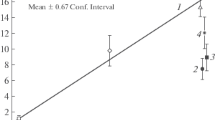Abstract
There is hardly any other field in chemical carcinogenesis in which such good agreement between experimental and clinical results has been reached as in carcinogenesis induced by antineoplastic agents. As early as 1967, the carcinogenic effects of the two alkylating drugs cyclophosphamide and triazichone in rats were reported (Schmähl 1967). The results were systematically supported in later experiments and extended to other antineoplastic compounds (Schmähl and Osswald 1970). The investigations revealed that predominantly those antineoplastic drugs which have an alkylating mechanism of action had to be classified as potential carcinogens, whereas antimetabolites and antimitotics exerted practically no carcinogenic effects. The doses required to induce cancer in rats and mice corresponded to doses administered to patients on a mg/kg basis. The findings obtained in 1970 were later on confirmed in numerous investigations carried out in other laboratories (see review in Schmähl and Kaldor 1986). Experiments on the mechanism of the carcinogenic action of alkylating agents yielded the clear result that this type of carcinogenesis is not linked to the immunosuppressive porperties of alkylating agents, but is due to direct interaction between the alkylating agent and DNA.
Access this chapter
Tax calculation will be finalised at checkout
Purchases are for personal use only
Preview
Unable to display preview. Download preview PDF.
Similar content being viewed by others
References
Brock N, Schneider B, Stekar J, Pohl J (1989) Experimental investigations into the carcinogenic effect of antitumor and immunosuppressive agents. J Cancer Res Clin Oncol 115:309–328
Chambers SK, Chopyk RL, Chambers JT, Schwartz PE, Duffy TP (1989) Development of leukemia after doxorubicin and cisplatin treatment for ovarian cancer. Cancer 64:2459–2461
Coleman MP, Bell CMJ, Fraser P (1987) Second primary malignancy after Hodgkin’s disease, ovarian cancer and cancer of the testis: a population based cohort study. Br J Cancer 56:349–355
Greene MH, Harris EL, Gerschenson DM, Malkasian GD et al. (1986) Melphalan may be a more potent leukemogen than cyclophosphamide. Ann Int Med 105:360–367
Kempf SR, Ivankovic S (1986) Chemotherapy induced malignancies in rats after treatment with cisplatin as single agent and in combination: preliminary results. Oncology 43:187–191
Penn I (1988) Immunosuppression and neoplasia: cancers after cyclosporine therapy. Transplant Proc 20:276–279
Petru E, Schmähl D (1990) Chemotherapy induced second primary neoplasms; clinical aspects. Neoplasma, in press
Schmähl D (1967) Karzinogene Wirkung von Cyclophosphamid und Triazichon bei Ratten. Dtsch Med Wochenschr 92:1150–1152
Schmähl D (1977) Carcinogenic action of anticancer drugs with special reference to immunosuppression. Cancer 40:1927–1929
Schmähl D, Kaldor JM (ed) (1986) Carcinogenicity of alkylating cytostatic drugs. IARC Sci Publ 78. IARC Lyons
Schmähl D, Osswald H (1970) Experimentelle Untersuchungen über carcinogene Wirkungen von Krebschemotherapeutika und Immunsuppressiva. Arzneimittelforschung (Drug Res) 20:1461–1467
Schmähl D, Petru E (1986) Zweittumoren nach cytostatischer Therapie mit Alkylantien beim Menschen; toxikologische Gesichtspunkte. Dtsch Med Wochenschr 111:833–836
Tucker MA, Meadows AT, Boice JR, Stovall M et al. (1987) Leukemia after therapy with alkylating agents for childhood cancer. J Natl Cancer Inst 78:459–464
Vathaire F, Francois P, Hill C, Schweisguth O et al. (1989a) Role of radiotherapy and chemotherapy in the risk of second malignant neoplasms after cancer in childhood. Br J Cancer 59:792–796
Vathaire F, Schweisguth O, Rodary C, Francois P et al. (1989b) Long term risk of second malignant neoplasms after cancer in childhood. Br J Cancer 59:448–452
Editor information
Editors and Affiliations
Rights and permissions
Copyright information
© 1991 Springer-Verlag Berlin Heidelberg
About this paper
Cite this paper
Schmähl, D., Bunk, B. (1991). Carcinogenic Effects of Immunosuppressive Drugs in Man. In: Schmähl, D., Penn, I. (eds) Cancer in Organ Transplant Recipients. Springer, Berlin, Heidelberg. https://doi.org/10.1007/978-3-642-75991-8_12
Download citation
DOI: https://doi.org/10.1007/978-3-642-75991-8_12
Publisher Name: Springer, Berlin, Heidelberg
Print ISBN: 978-3-540-53020-6
Online ISBN: 978-3-642-75991-8
eBook Packages: Springer Book Archive




